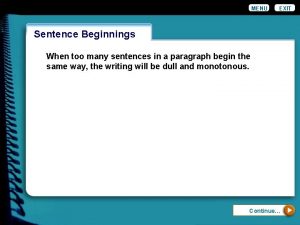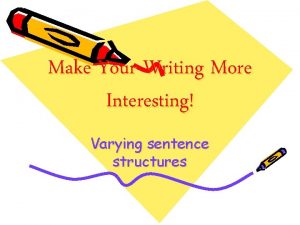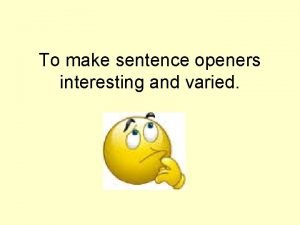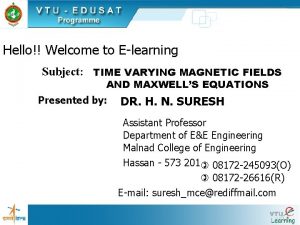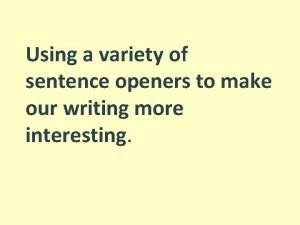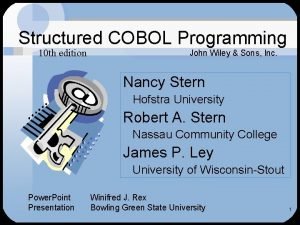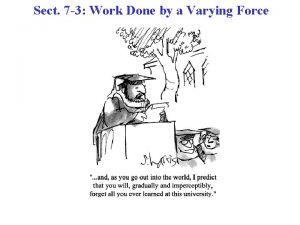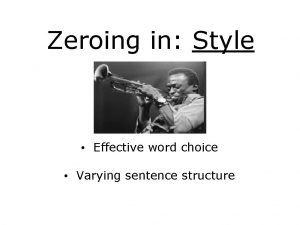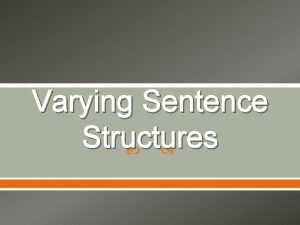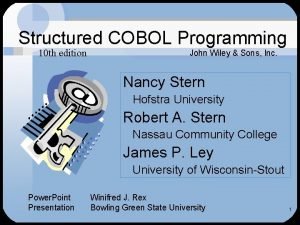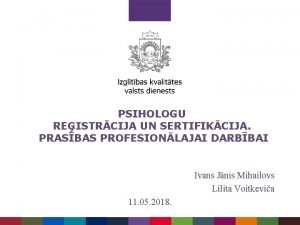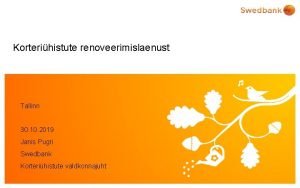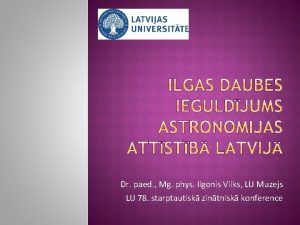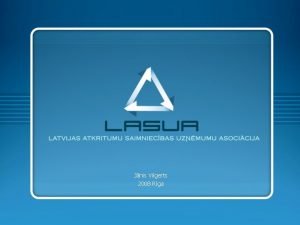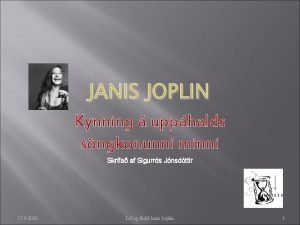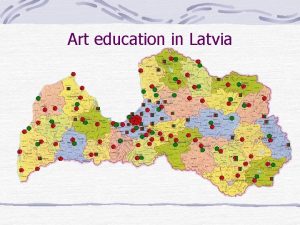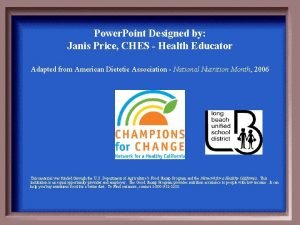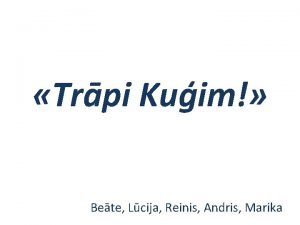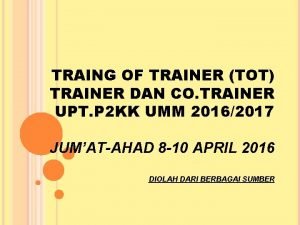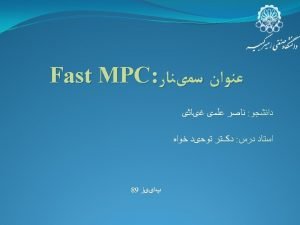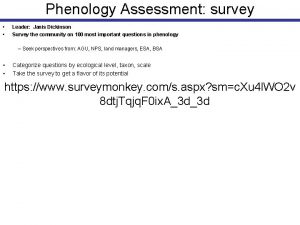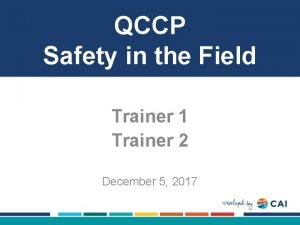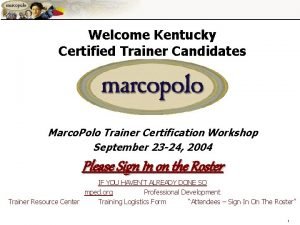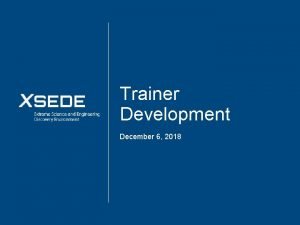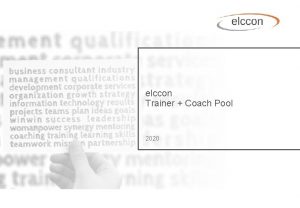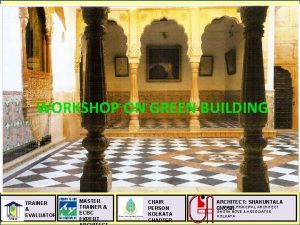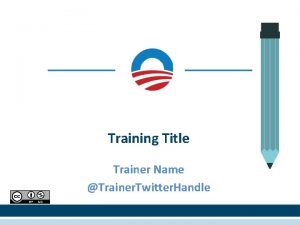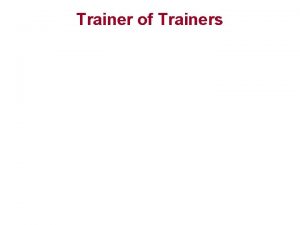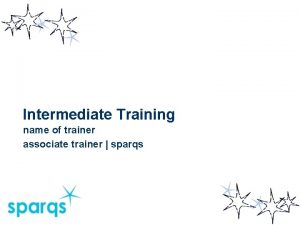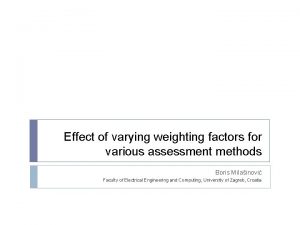Janis HoldenToruo NC Assessment Trainer holdenjfaytechcc edu Varying






















- Slides: 22

* Janis Holden-Toruño NC Assessment Trainer holdenj@faytechcc. edu

*Varying degrees of native language literacy *Many native languages: some with the Roman alphabet, others with another alphabet, and some with no written alphabet. *Varying rates of progress affected by: *Diverse learning styles *Learner expectations *Culture, religion, sex, and age of the learners. *

*Standardized Assessments (formal) include CASAS, BEST, and TABE Clas-E. TABE is norms-referenced while CASAS and BEST are criterion-referenced. *Alternative Assessments (informal) include one-onone interviews, group discussions, learner observations, teacher-made tests, quizzes, homework, projects, et al. These assessments help determine the instructional level, but do not give us the complete picture. *

*Why do your students want to learn English? *Intermediate and Advanced students can do a goal- setting exercise. This can be an individual assessment or it can be done as a group. Suggested questions: *1. What do I want to do? *2. What will help me reach my goal? *3. What will prevent me from reaching my goal? *4. What is my plan of action? *

*Why do your students want to learn English? *Beginning students can be given an activity sheet with pictures. This can be an individual assessment or it can be done as a group. The activity sheet can have simple English captions under pictures of things such as children’s school, work, driving, etc. Remember: It is important that adult learners are actively involved in choosing the direction and content of their learning (Auerbach, 1992). *

How do I pull that rabbit out of my hat? *

*Self-access centers enable learners to take responsibility for choosing appropriate work. *Tasks are set up so that learners need minimal assistance to accomplish the activity. *Directions are clear and need little explanation. *Answers are often provided to allow learners to evaluate their own work. *

*Factors to consider: *Differences in age *Social backgrounds *Country of origin *Educational background *English language ability Cultural and personal differences are important! *

*There are many text books that lend themselves to guided, self-access study. Look for books with an answer key. Some answer keys even explain why an answer is appropriate. *Books with correlated CDs or Tapes are very useful, especially if you have a CD/Tape Player with headphones for students to use. * Belkin sells a Multi Headphone Splitter that allows five headphones to be plugged in. Cost is under $20. Other splitters are available. *Legally reproducible activities cost more in the beginning, but are very economical and very useful. *

*Health Stories (and other books from New Readers Press) *English, Yes! Or Literature in English (Contemporary) *Six-Way Paragraphs (Contemporary) *Practical English (Cengage) *Side by Side (Pearson) *Vocabulary series from Townsend Press *

*10 Steps: Controlled Composition by Gay Brookes & Jean Withrow (oop-Check Amazon) *26 Steps: Controlled Composition by Linda Ann Kuntz (oop-Check Amazon) *Writing Practical English 1, 2, & 3 by Tim Harris and Allan Rowe (Cengage). The companion book is called Practical English Don’t forget Dialog Journals! They aren’t a text, but they are a good way to get students writing. *

10 Steps, by Gay Brookes and Jean Withrow

Writing Practical English 1, by Tim Harris

*Listening Dictation: Understanding English Sentence Structure by Joan Morley (University of Michigan Press) *Active Listening (Levels 1, 2, & 3) *Catherine Sadow books on dictation: * Great Dictations (High Beginning) * Interactive Dictations (Intermediate) * Dictations for Discussion (Advanced) by Sadow and De. Felippo (Pro Lingua Associates) *

*Jazz Chants *Grammar Chants *Other chants books by Martha Graham * *Pronunciation Pairs *Clear Speech from the Start

Grammar Chants By Carolyn Graham

* Back & Forth: Photocopiable Cooperative Pair Activities for Language Development by Palmer, Rodgers, & Olsen (Alta ESL) * Look Who’s Talking by Christison & Bassano (Alta ESL) * Writing Warm Ups: 70 Activities for Prewriting by Tom & Mc. Kay (Alta ESL) * Index Card Games for ESL by Clark (Alta ESL) * Ventures: Civics Worksheets by Bitterlin et al (Cambridge) *

* Software for Purchase (Internet based) * Burlington English—An exceptionally well- done, interactive software experience. Costs under $100 per seat per year. Go to www. Burlington. English. com * Rosetta Stone—Another great program. They have moved from CDs to online. It’s expensive, but you get good value. Email them for information at: education@rosettastone. com *

Great Websites *www. Free. Rice. com Help feed the hungry while learning. This is a free website and has more than just vocabulary. *www. ESLCafe. com Dave’s ESL Café has activities for students and lots of information for instructors. *www. ESL-Lab. com Randall’s Cyber Listening Lab *www. townsendpress. net Higher level reading *Create your own class website at www. weebly. com It’s free—create up to two sites. *

*Just-a-Minute by Elizabeth Claire (elizabethclaire. com) *Cathy’s Cards by Cathy Jo Seitchik Diaz (Alta ESL) *Runners & Scribes (make your own) *Basta! (make your own) *Hangman (make your own) *Information Gaps (make your own) *Dictacomp (make your own) *

*Consider making pre-recorded tapes for dictation. *Use writing frames to create sentences. *Develop longer writing exercises such as those found in 10 Steps or 26 Steps. Try News for You articles or other appropriate-level reading if you don’t have time to prepare your own. *Keep index cards of topics to be discussed. *Have role play scenarios for pairs or small groups. *

Hey students! Wanna see me pull a rabbit out of my hat? *
 Exit sentence
Exit sentence Interesting sentence structures
Interesting sentence structures Equation of continuity for time varying fields
Equation of continuity for time varying fields Complex sentence openers
Complex sentence openers Equation of continuity for time varying fields
Equation of continuity for time varying fields Interesting sentence openers
Interesting sentence openers Cobol perform varying decrement
Cobol perform varying decrement Fappis
Fappis Varying sentence beginnings
Varying sentence beginnings Balanced sentence examples
Balanced sentence examples Structured cobol programming
Structured cobol programming Ivans jānis mihailovs
Ivans jānis mihailovs Janis pugri
Janis pugri Jānis ikaunieks astronoms
Jānis ikaunieks astronoms Janis joplin monterey pop festival
Janis joplin monterey pop festival Janis griffin
Janis griffin Janis joplin vejer
Janis joplin vejer Jānis vilgerts
Jānis vilgerts Janis joplin
Janis joplin Janis rozentāls riga art school
Janis rozentāls riga art school Janis price
Janis price Ar cieņu jānis
Ar cieņu jānis Janis pugri
Janis pugri
